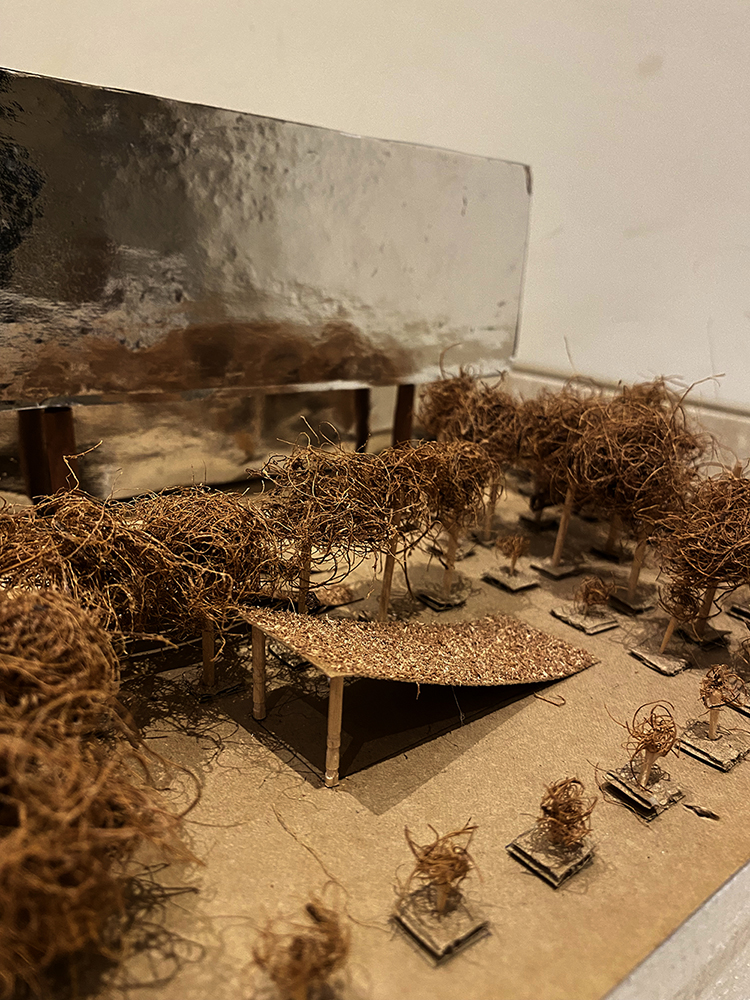Singh Siddharth
Project Period: Eight months
This Foundation Project implemented by IFA under Arts Practice – Workshops, Residencies, Seminars, will create a design residency for architects and designers to reimagine the architectonics of performance spaces including those of theatre, in the context of the Covid-19 pandemic and physical distancing. Singh Siddharth is the Coordinator for this project.
A CEPT Ahmedabad graduate, Siddharth was the project architect for the upgradation of Taj Ganj, an urban revitalisation of the three access roads to the Taj Mahal, which was inaugurated in November 2016. He has worked on several large-scale project across river fronts, forest and urban parks, and cultural complexes. Besides being the founding partner at the New Delhi based spatial design firm Design Pendulum, Siddharth is involved in graphics and publications through his visual communication design enterprise compoundeye. Currently, he teaches undergraduate architecture students at CEPT University Ahmedabad. Given his experience he is best placed to be the Coordinator of this Foundation Project of IFA.
This project titled People, Pandemic and a Place for Performance is planned as a Monsoon Design Residency. This project has been inspired by Prof. Rustom Bharucha’s nine-episode speech act titled Theater & CoronaVirus, which was offered at Freie Universität Berlin, in January 2021. In this nine-episode speech act, Bharucha has reflected on the historical moments of the closure of theatre in relation to pandemics, social distancing in the context of everyday performativity and political assemblies, and new paradigms of theatre architecture as a search for a post-pandemic ecology of space. This design residency has been planned from the thought that, after having spent an entire cycle of seasons in physical incarceration due to the pandemic, it is time to formulate an architectural design response to the spatial form performance making including theatre, based on the insights from Bharucha’s speech acts.
The project will unearth the possibility of collaborative design process towards diversity and plurality of outcomes as against the limitations of an individual designer or professional studio searching for solutions. Unhindered by institutional and academic necessities of team size, grading and pre-determined outcomes, the residency will create situations for conversations and processes fuelled by curiosity and creativity. The project co-ordinator who has been in a teaching position in premier architecture and design institutions in India, will be in a position to mentor diversely interested and capable students coming from spatial disciplines of architecture, interior design, exhibition and urban design. It is now planned as an eight-week engagement with a six-week residency in New Delhi. The participants will be selected through a call for applications. The project will consider the potential of tapping into the diversity of the country by having each participant of the six-member team from a distinct cultural region. The project, therefore, is conceived as a studio/ residency with a pedagogical framework of encouraging participants to discover their embodied individuality within an intimate collective, while engaging with multidisciplinary processes to create six diverse places of performance.
The work will begin with the question of the changes caused by the pandemic in the everyday practices of the participants, in art as well as life. This is intended to expand the definition of performances and their relationship to spaces. Subsequently, the participants will arrive for the six-week residency in New Delhi and will engage in small design exercises. The design question that the participants will engage with are the disruption of daily rituals and breath. Although the human body has been considered as a metrical dimension of architecture and design, from Vastupurushamandala to the Vitruvian Man, in the context of the pandemic, the residency embarks on the imminent question, “How does this architecture breathe?”
As advised by one of the expert external evaluators, the studio output of the residency will not be exclusively architecture. In addition to continuous discussions with peers and the project coordinator, the participants will also benefit from the three reviews with a pair of senior mentors scheduled intermittently during the course of the residency. Further, there will be input lectures, workshops and a seminar with experts and senior creative practitioners. Fortnightly briefs will keep the participants informed about exercises, activities, deliverables and reviews scheduled.
The outcome of the project will be orthographic drawings, volumetric and form models, essays and visual concept maps. The Project Coordinator’s deliverables to IFA with the final report will be photographs, audio-visual documentation of the workshop and outcomes, screen recordings of online sessions, architectural drawings and models in digital forms, link to the studio blog and an offline file of the studio blog at the time of project completion.
This project suitably addresses the framework of IFA’s Arts Practice programme in the manner in which it attempts to create a situation where young designers and architects come together to reflect on their everyday cultural practices in the context of post-pandemic ecology of design.
IFA will ensure that the implementation of this project happens in a timely manner and funds expended are accounted for. IFA will also review the progress of the project at midterm and document it through an Implementation Memorandum. After the project is finished and all deliverables are submitted, IFA will put together a Final Evaluation to share with Trustees.
This project is made possible with support from Sony Pictures Entertainment Fund.



